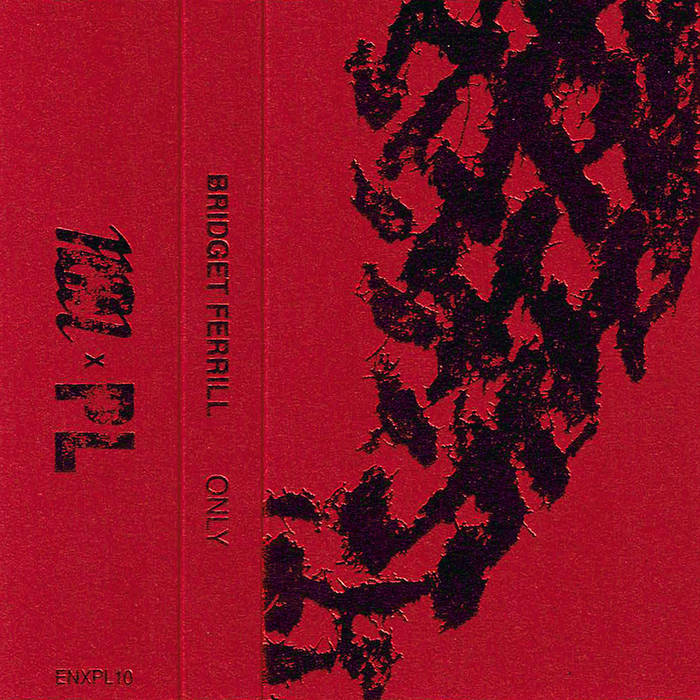
An unpredictable four track EP that pulls from classical tape music styles as much as it does from modern or postmodern industrial, this mediation by Bridget Ferrill reconnects us with ancient rites of deep listening.
It begins with the seemingly random walk of a synthesizer operating close to the noise floor. The dulcet tones of warning signs flickering on mid-flight, indicating coming turbulence, the necessity of heightened alertness to impending danger. The way people living under active conditions of war can fall asleep in the middle of an air raid, the pertinence of this signal fades, undergoing some process of synaptic normalization, and underneath all that is left is that slow scanning darkness.
This is the Buchla, one of the original modular synthesizer designs out of Berkeley, California, which was popularized by artists like Suzanne Ciani over the last few decades for its ability to produce an incredible range and power of soundscapes with technology that is now almost sixty years old. These kinds of far-out recordings prove that older machines like this are every bit as valuable as instruments as their newer and slicker counterparts, tricked out as they are with digital signal processing chips.
A drowsy, almost meditative pattern of plucked Harp takes over. The deliberate pace of the music and mantra-like, almost melancholic repetitions force you to listen more closely than ever. There is a phenomenon in Swedish television referred to as “Slow T.V.” Episodes are hours long and are glacially paced, following subjects like the tides encroaching on a small Nordic fishing village at dawn, or else the scenery slowly changing on a steam-engine ride across the rural planes of some recently formed Eastern European country. By omitting the cuts, heavy multistage EQs, layers of post-processing, convolutional effects, and sophisticated mastering of modern electronic art pieces, the piece moves closer to the reality of human experience, shorn of the tricks of the cutting room floor; we must focus on the raw beauty of the instrument itself. The stringed and woodwind instruments which have captivated operahouses full of people for thousands of years now have not gotten less interesting, it is that we have unfortunately lost the ability to appreciate them without the high-frequency, ADHD-satisfying interruption of sound effects, light shows, advertisements, high-fructose sound over-engineering.
To listen to a single instrument, which has alone translated the deepest feelings experienced by its practitioner since before recorded history itself began, remains vital to the human experience. Music like this restores our connections to these ancient rites, for it forces us to listen to the sometimes unbearable pace of life.
The near-mournful dirge of Viola de Gamba somehow manufactures a kicklike click sequence out of what might be otherwise construed as digital glitching of the motherboard. The strings layer themselves and assemble into snatches of chords, the root or top note vanishing suddenly, revealing subspaces of emotion. Movements of the music appear and disappear with startling abruptness and clarity, such that the timbre of the vibration of an individual string is felt as a physical presence. With such clarity, the experience is like listening to the motion of the equations of vibrational physics themselves.
The final song, Zither, is also the first to open with discernible rhythm; which sounds more like it is tapped out on a pneumatic typewriter than plotted out on a staff. Rumbling subnotes explode into noisy techno with the alarming suddenness of a vein rupturing. A cacophonic breakbeat drumline that sounds like something between a gunshot and a planetary-scale snare undergirds loud metallic screeches, a building being torn apart like a screaming bird in the hands of a sadistic monkey.
-Winston Mann
Check out Dirty Epic music recommendations here.
Listen to our podcasts here.
Find out more about our events here.

